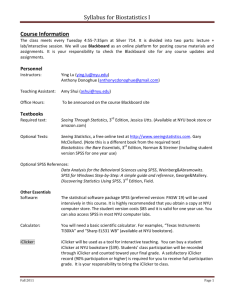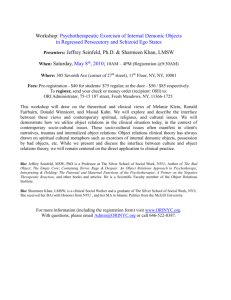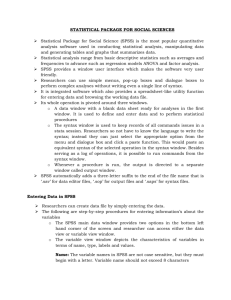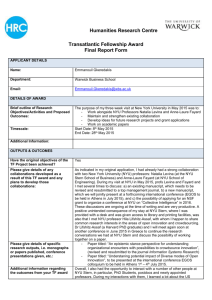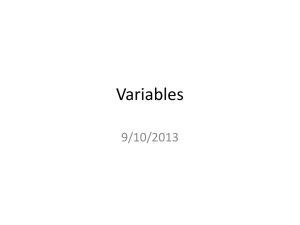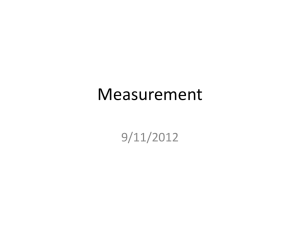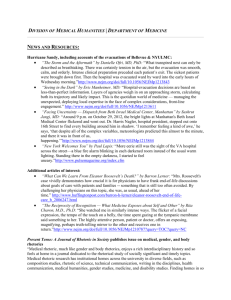SPSS-Intro_slides
advertisement
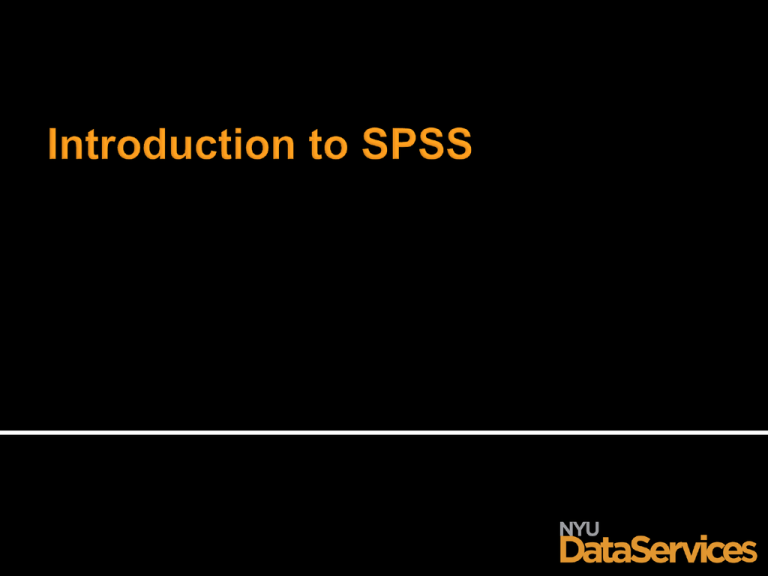
Overview of SPSS Interface Getting Started Managing Data Descriptive Statistics Basic Analysis Additional Resources NYU Data Services Tutorials and support for academic software One-on-one consultation by appointment Data Services website: – http://nyu.libguides.com/dataservices – Google “nyu data services” Training tab – Slides and sample code – External resources SPSS is a statistical package that allows advanced data analysis, management, and graphics. SPSS has capabilities similar to Stata, SAS, Minitab There are SPSS student licenses available at NYU computer store for Windows and Mac. You can also access it through VCL (vcl.nyu.edu) or using NYU computers Data file (.sav) Syntax File (.sps) Commands should be written and saved in syntax rather then using SPSS drop down menu: Some advantages to using syntax files: o allows reusing commands (the same analysis can be quickly repeated on different data sets as long as the variables name match) o allows to copy, past and edit commands o easier to read complex expressions o allows sharing commands / methods with other researchers Output (.spv) o Allows saving both the outcomes of our analysis but can also help retrieve information for further use in a syntax window. o A bit messy – if we are running the same analysis but for example excluding some cases/ outliers it might be a little difficult to keep track of what is what. Recoding Variables: Can be necessary in several cases: - reverse coded items - continuous variables into grouping variables - grouping variables in OLS Computing Variables For variable’s description: Analyze -> Descriptive Statistics -> Descriptives For frequencies: Analyze -> Descriptive Statistics -> Frequencies To detect outliers: Analyze -> Descriptive Statistics -> Explore Scatter Plot: Graphs -> Legacy Dialogs-> Scatter/dot Histograms: Graphs -> Legacy Dialogs-> Histograms OR Analyze -> Legacy Dialog Some examples: Correlation Analyze -> Correlate -> Bivariate T-tests Analyze -> Compare Means -> Regression Analyze -> Regression-> Linear ANOVA Analyze -> General Linear Models Additional Help The Data Services staff is available to answer SPSS related questions. – Email: data.services@nyu.edu – Phone: (212)-998-3434 – Location: 5th Floor of Bobst Library Please refer to the Data Services training page Please follow the link below: This will only take a few minutes and help us a great lot in improving the tutorial bit.ly/IntroSPSS
